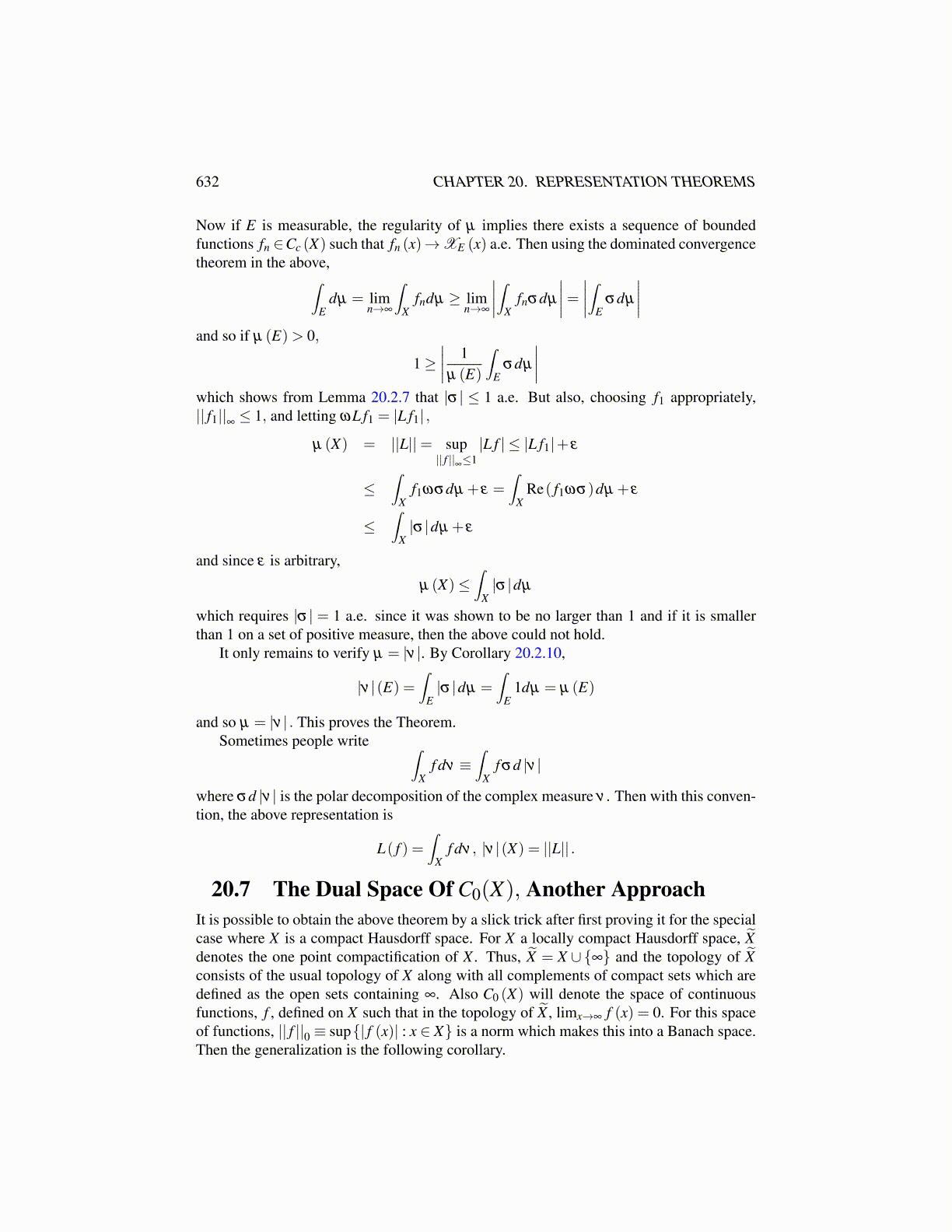
632 CHAPTER 20. REPRESENTATION THEOREMS
Now if E is measurable, the regularity of µ implies there exists a sequence of boundedfunctions fn ∈Cc (X) such that fn (x)→XE (x) a.e. Then using the dominated convergencetheorem in the above,∫
Edµ = lim
n→∞
∫X
fndµ ≥ limn→∞
∣∣∣∣∫Xfnσdµ
∣∣∣∣= ∣∣∣∣∫Eσdµ
∣∣∣∣and so if µ (E)> 0,
1≥∣∣∣∣ 1µ (E)
∫E
σdµ
∣∣∣∣which shows from Lemma 20.2.7 that |σ | ≤ 1 a.e. But also, choosing f1 appropriately,|| f1||∞ ≤ 1, and letting ωL f1 = |L f1| ,
µ (X) = ||L||= sup|| f ||∞≤1
|L f | ≤ |L f1|+ ε
≤∫
Xf1ωσdµ + ε =
∫X
Re( f1ωσ)dµ + ε
≤∫
X|σ |dµ + ε
and since ε is arbitrary,
µ (X)≤∫
X|σ |dµ
which requires |σ | = 1 a.e. since it was shown to be no larger than 1 and if it is smallerthan 1 on a set of positive measure, then the above could not hold.
It only remains to verify µ = |ν |. By Corollary 20.2.10,
|ν |(E) =∫
E|σ |dµ =
∫E
1dµ = µ (E)
and so µ = |ν | . This proves the Theorem.Sometimes people write ∫
Xf dν ≡
∫X
f σd |ν |
where σd |ν | is the polar decomposition of the complex measure ν . Then with this conven-tion, the above representation is
L( f ) =∫
Xf dν , |ν |(X) = ||L|| .
20.7 The Dual Space Of C0(X), Another ApproachIt is possible to obtain the above theorem by a slick trick after first proving it for the specialcase where X is a compact Hausdorff space. For X a locally compact Hausdorff space, X̃denotes the one point compactification of X . Thus, X̃ = X ∪{∞} and the topology of X̃consists of the usual topology of X along with all complements of compact sets which aredefined as the open sets containing ∞. Also C0 (X) will denote the space of continuousfunctions, f , defined on X such that in the topology of X̃ , limx→∞ f (x) = 0. For this spaceof functions, || f ||0 ≡ sup{| f (x)| : x ∈ X} is a norm which makes this into a Banach space.Then the generalization is the following corollary.